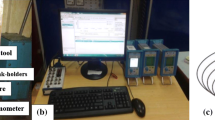Abstract
The present investigation systematically analyzes and compares the influence of microstructure and crystallographic texture of AA1050 sheet to that of the most critical process parameters, namely tool dimension, and incremental step depth, in single-point incremental forming (SPIF) process. The sheet samples were preheated at different temperatures to reform the original, i.e., distorted and misoriented grain distribution. The results from experimental and statistical analyses report higher sensitivity of global spring back, surface topography and forming limits strains to variations in microstructure and texture than tool diameter and incremental step depth. The preheating of the sheets resulted in the formation of preferential texture by grain reformation, which leads to the increase in the fraction of homogeneous orientated grains. Such grains increase the maximum forming limit strains and reduce the global spring back in SPIF. Fractography analysis of the failed components revealed that improvement in formability due to grain homogenization (developed texture) may be attributed to larger average void diameter. Empirical models were also developed, and optimized levels of parameters were identified to maximize the efficiency of the SPIF process. Further, qualitative and quantitative characterization of orange peel roughness was carried out by segregating the external formed surface into surfaces subjected to orange peel roughness and tool-induced texture.














Similar content being viewed by others
References
K.A. Al-Ghamdi and G. Hussain, Parameter-Formability Relationship in ISF of Tri-Layered Cu-Steel-Cu Composite Sheet Metal: Response Surface and Microscopic Analyses, Int. J. Precis. Eng. Manuf., 2016, 17(12), p 1633–1642. https://doi.org/10.1007/s12541-016-0189-3
G. Hussain, L. Gao, and N. Hayat, Forming Parameters and Forming Defects in Incremental Forming of an Aluminum Sheet: Correlation, Empirical Modeling, and Optimization: Part A, Mater. Manuf. Process., 2011, 26(12), p 1546–1553. https://doi.org/10.1080/10426914.2011.552017
B. Lu and H. Ou, Feature-Based Tool Path Generation Approach for Incremental Sheet Forming Process, J. Mater. Process. Technol., 2013, 213(July), p 1221–1233
F. Micari, G. Ambrogio, and L. Filice, Shape and Dimensional Accuracy in Single Point Incremental Forming: State of the Art and Future Trends, J. Mater. Process. Technol., 2007, 191(1–3), p 390–395. https://doi.org/10.1016/j.jmatprotec.2007.03.066
S. Kurra, N. Hifzur Rahman, S.P. Regalla, and A.K. Gupta, Modeling and Optimization of Surface Roughness in Single Point Incremental Forming Process, J. Mater. Res. Technol., 2015, 4(3), p 304–313. https://doi.org/10.1016/j.jmrt.2015.01.003
K. Hamilton and J. Jeswiet, Single Point Incremental Forming at High Feed Rates and Rotational Speeds: Surface and Structural Consequences, CIRP Ann., 2010, 59(1), p 311–314. https://doi.org/10.1016/j.cirp.2010.03.016
J.-W. Feng, L.-H. Zhan, and Y.-G. Yang, The Establishment of Surface Roughness as Failure Criterion of Al–Li Alloy Stretch-Forming Process, Metals (Basel), 2016, 6(1), p 13. https://doi.org/10.3390/met6010013
J.M. Allwood and D.R. Shouler, Generalised Forming Limit Diagrams Showing Increased Forming Limits with Non-planar Stress States, Int. J. Plast, 2009, 25(7), p 1207–1230. https://doi.org/10.1016/j.ijplas.2008.11.001
D.Y. Seong, M.Z. Haque, J.B. Kim, T.B. Stoughton, and J.W. Yoon, Suppression of Necking in Incremental Sheet Forming, Int. J. Solids Struct., 2014, 51(15–16), p 2840–2849. https://doi.org/10.1016/j.ijsolstr.2014.04.007
P. Shrivastava and P. Tandon, Microstructure and Texture Based Analysis of Forming Behavior and Deformation Mechanism of AA1050 Sheet during Single Point Incremental Forming, J. Mater. Process. Technol., 2018, https://doi.org/10.1016/j.jmatprotec.2018.11.012
S. Gatea, H. Ou, and G. McCartney, Review on the Influence of Process Parameters in Incremental Sheet Forming, Int. J. Adv. Manuf. Technol., 2016, 87(1–4), p 479–499. https://doi.org/10.1007/s00170-016-8426-6
J.E. Hatch, Aluminum Association, and American Society for Metals: Aluminum: Properties and Physical Metallurgy. American Society for Metals (1984). https://books.google.co.in/books/about/Aluminum.html?id=dUgzGsEMhoUC. Accessed 18 May 2018
R.K. Roy, Recrystallization Behavior of Commercial Purity Aluminium Alloys, Light Metal Alloys Appl., 2014, https://doi.org/10.5772/58385
S. Ojha, N.S. Mishra, and B.K. Jha, Effect of Cooling Rate on the Microstructure and Mechanical Properties of a C-Mn-Cr-B Steel. Bull. Mater. Sci. (2015). https://www.ias.ac.in/article/fulltext/boms/038/02/0531-0536. Accessed 6 Sept 2018
X. Guo, Y. Gu, H. Wang, K. Jin, and J. Tao, The Bauschinger Effect and Mechanical Properties of AA5754 Aluminum Alloy in Incremental Forming Process, Int. J. Adv. Manuf. Technol., 2018, 94(1–4), p 1387–1396. https://doi.org/10.1007/s00170-017-0965-y
K. Maji, D.K. Pratihar, and A.K. Nath, Experimental Investigations and Statistical Analysis of Pulsed Laser Bending of AISI, 304 Stainless Steel Sheet, Opt. Laser Technol., 2013, 49, p 18–27. https://doi.org/10.1016/j.optlastec.2012.12.006
M.L. Miranda-Medina, P. Somkuti, D. Bianchi, U. Cihak-Bayr, D. Bader, M. Jech, and A. Vernes, Characterisation of Orange Peel on Highly Polished Steel Surfaces, Surf. Eng., 2015, 31(7), p 519–525. https://doi.org/10.1179/1743294414y.0000000407
N. Tayebi and A.A. Polycarpou, Modeling the Effect of Skewness and Kurtosis on the Static Friction Coefficient of Rough Surfaces, Tribol. Int., 2004, 37(6), p 491–505. https://doi.org/10.1016/j.triboint.2003.11.010
Author information
Authors and Affiliations
Corresponding author
Additional information
Publisher's Note
Springer Nature remains neutral with regard to jurisdictional claims in published maps and institutional affiliations.
Rights and permissions
About this article
Cite this article
Shrivastava, P., Tandon, P. Effect of Preheated Microstructure Vis-à-vis Process Parameters and Characterization of Orange Peel in Incremental Forming of AA1050 Sheets. J. of Materi Eng and Perform 28, 2530–2542 (2019). https://doi.org/10.1007/s11665-019-04032-z
Received:
Revised:
Published:
Issue Date:
DOI: https://doi.org/10.1007/s11665-019-04032-z




